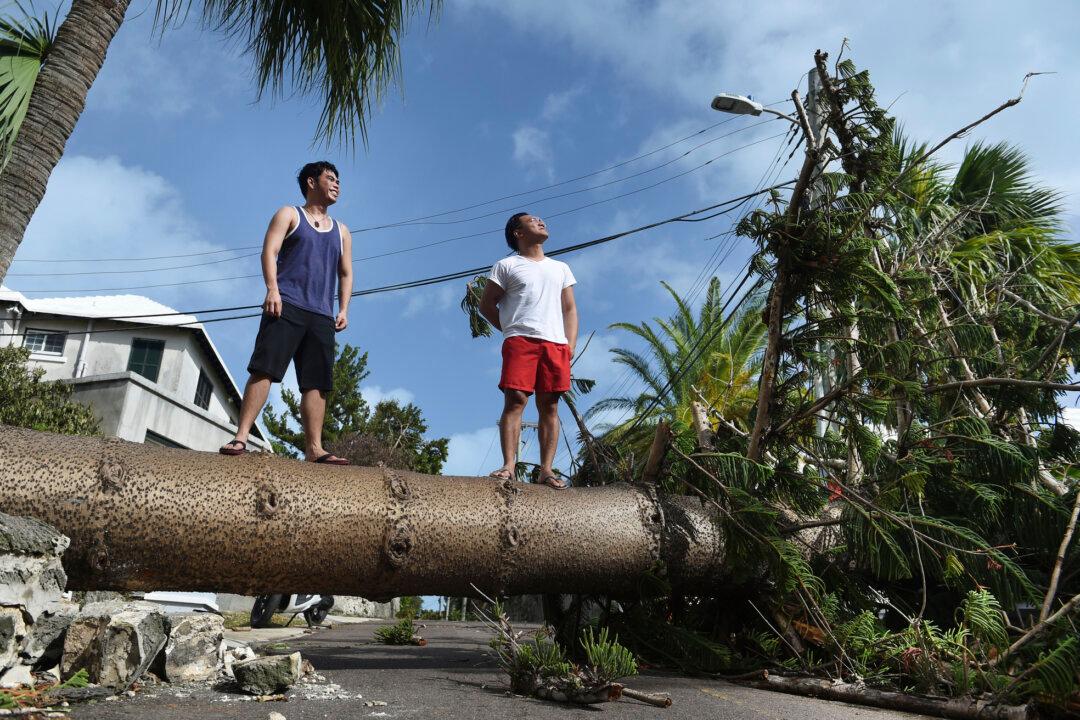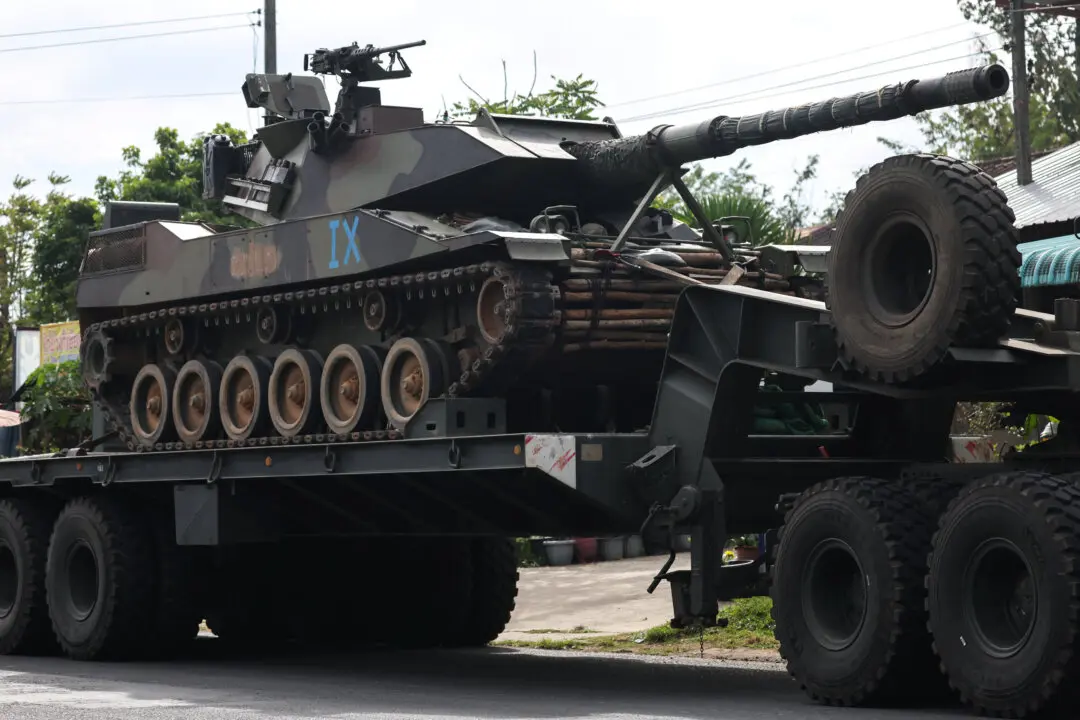HAMILTON, Bermuda—Cleanup crews in Bermuda were busy at work on Sept. 19 after Hurricane Humberto grazed the island, which escaped major harm despite winds that reached around 100 mph, snapping power poles and lifting off roofs.
Debris including power lines littered roads, and dozens of homes lost parts of their roofs, a Reuters witness said.





